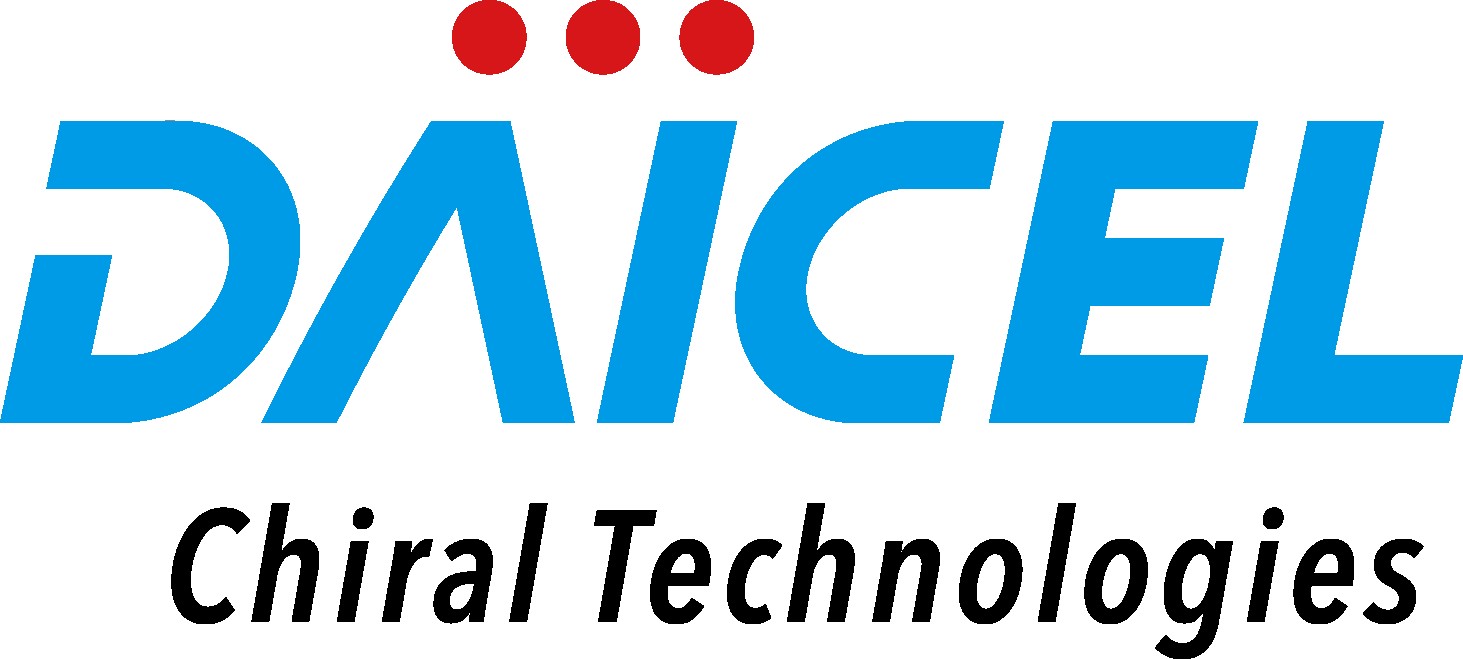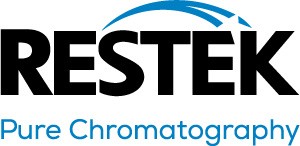CFDV Annual Symposium 2023
with Diana Aga, Thivanka Ariyarathna, Xiaoyan Wang, Pierluigi Delmonte, Daniel Steyer, Constantinos Pistos, and Denise Heyburn
About This Symposium
UPDATE: Find full schedule for April 20th event by clicking here.
The long-awaited return of an in-person CFDV Annual Symposium is here! Please join us on April 20, 2023 for a great day of chromatography and networking. Our theme this year is "Saving the World with Chromatography". Registration includes a continental breakfast, lunch, and an afternoon snack. Speakers include:
Diana Aga
Henry M. Woodburn Professor of Chemistry, University at Buffalo, The State University of New York
Forever Chemicals: A Never-ending Analytical Challenge
Per- and polyfluoroalkyl substances (PFAS) are a class of chemicals that are widely used in industrial applications and consumer products that have become ubiquitous in the environment. PFAS have been detected in many drinking water supplies and they pose serious risks to humans and wildlife because of their bioaccumulative property, high stability, and toxicity. Reliable analytical methods that are applicable in multiple environmental media (e.g., biological samples, wastewater, air, etc.) are lacking. Regulating the levels of PFAS in the environment has become challenging because prioritization of PFAS for monitoring and control has not been fully established due to limitations in current analytical methods. Sampling and separation methods have severely limited our ability to comprehensively identify and accurately quantify PFAS contaminants in the environment, especially those emerging PFAS that are either highly polar or volatile. Nontarget analysis employing high-resolution liquid chromatography with mass spectrometry (LC-MS) is one of the key approaches for tackling the daunting task of identifying unknown environmental contaminants. However, annotation of small molecules and identification of unknowns based only on elemental composition and mass fragmentation patterns remain to be major challenges in nontarget analysis. This presentation will highlight examples of the challenges and potential solutions in PFAS analysis, ranging from matrix effects, ionization efficiencies, extraction, separation, quantification, and unknown identification in complex environmental matrices.
Xiaoyan Wang
Senior Global R&D Scientist, FMC
Structure Elucidation of Agrochemical Process Impurities by Preparative HPLC Isolation followed by GC/MS and NMR Analyses
Three new impurities were formed during the phosgene chlorination step in an alternate process route of an intermediate of an agrochemical compound. A high-resolution mass spectrometer (LC-QTOF) was initially utilized to acquire the accurate masses of the new impurities to propose possible chemical formulas and structures thereafter. However, the impurities would not ionize under multi-mode ionization (mixed, ESI, and APCI at positive and negative polarities). Preparative HPLC was then used to isolate these non-ionizable impurities followed by complete solvent removal for NMR analysis, unfortunately nothing was observed in NMR. With critical thinking, Prep HPLC method and solvent removal step were modified taking compound volatility into consideration. Each peak of interest was collected into 3 fractions: before, at, and after the apex. The collected fractions were analyzed by the original analytical method to confirm right collection of the peaks of interest. The samples were then analyzed by GC/MS and the acquired mass spectra were searched against the NIST library. The apexes of the peaks (more concentrated sample) were first analyzed by 1H NMR directly using a solvent pre-saturation technique to suppress the strong signal from the Prep HPLC eluent. The structures of the impurities were assigned based on the 1H NMR spectra and the GC/MS results. Further sample treatment was performed by liquid-liquid extraction (LLE) of the combined fractions (before, at, and after the apex) with dichloromethane, followed by nitrogen evaporation and solvent exchange into DMSO-d6. The enriched samples were analyzed by 1D and 2D 1H/13C NMR which confirmed the 1H NMR-based structure assignments. In conclusion, the structure elucidation strategy using preparative HPLC isolation, proper solvent removal, followed by GC/MS and NMR analyses successfully revealed the definitive structures of three small, volatile, and non-ionizable impurities formed in an alternate agrochemical process route.
Thivanka Ariyarathna
Assistant Professor of Environmental Science, Rowan University
Chromatography Applications: Case Studies in Environmental Science
Chromatography is a widely used technique in various disciplines in environmental science to separate mixtures of compounds in complex environmental media including water, sediment, soil, plant, and biota. Different chromatography techniques can be employed to separate and/or identify individual compounds in mixtures based on compound characteristics including polarity, volatility etc. In this talk, I will discuss case studies of chromatography applications that I used to analyze both natural and man-made substances found in the environment. Organic biomarkers preserved in sediments are commonly used in environmental research including paleoclimatic reconstructions and evaluation of natural biogeochemical processes and their changes due to human disturbances. Total lipid extracts of sediments are separated into fractions of apolar, ketone and polar compounds using alumina column chromatography followed by analysis of biomarkers in separated fractions using gas and liquid chromatography techniques. As an example, branched glycerol dialkyl glycerol tetraether lipids (GDGTs) found in polar fraction are analyzed using high performance liquid chromatography-mass spectrometry (HPLC-MS) to reconstruct past temperatures. Sedimentary lignin phenols are a compound class that represent terrestrial carbon dynamics and can effectively be quantified using gas chromatography-mass spectrometry (GC-MS). Moreover, continuous monitoring and remediation efforts of environmental pollutants require identification and/or quantification of organic contaminants and heavy metals. Gas, liquid, and ion chromatography methods are well established and heavily utilized for that purpose. Fingerprinting oil including polycyclic aromatic hydrocarbons (PAHs) using GC-MS is one of the best examples of it. Here, I will highlight how to utilize chromatography techniques to fingerprint PAHs in lake sediments and to evaluate distribution and degradation of munitions in different ecosystems.
Pierluigi Delmonte
Research Chemist, FDA
Challenges in Trans-fat Analysis and Optimization of Parameters for Accurate Quantitation
The measurement of trans fatty acids (t-FA) and other fatty acids (FA) of nutritional value in fats and oils is still based on gas chromatography with flame ionization detection. Despite the simplicity of this technique, there are often differences in quantitative results provided by different laboratories or analysts. These analyses are generally accomplished using long capillary columns coated with the most polar liquid phases to maximize the dipole-induced dipole interactions that provide FA separation based on the geometric configuration and position of their double bonds. Trans fatty acids are present in fats and oils as result of chemical hydrogenation, refining at high temperatures, and ruminant biohydrogenation. Each of these three processes provide a different profile in t-FA, and generally different analytical methods are applied. We developed a single comprehensive methodology that permits the quantification of t-FA from these 3 sources, taking advantage of the ability of modern gas chromatographs to perform negative temperature gradients. The selection of the appropriate stationary phase and temperature program for the analysis of different types of fats and oils plays a key role in the accurate quantification of t-FA, but are not the only determining variables. The selectivity of highly polar phases is affected by column age, usage history, and ultimately may vary based on the lot of production. To address the variability affecting the separation of FA using highly polar capillary columns, we developed a tuning procedure that permits reproducible separations across different laboratories. The application of the novel methodology and calibration procedure discussed in this presentation leads to more accurate and reproducible quantifications of t-FA.
Daniel Steyer
Investigator, GSK
Application of Liquid Chromatography-Mass Spectrometry and Droplet Microfluidics for Monitoring Pancreatic Islet Secretions
Diabetes mellitus is a group of metabolic disorders characterized by the inability of the body to properly regulate blood glucose. Pancreatic islets (Islets of Langerhans) are discrete groupings of cells which synthesize the majority of the body’s glucose regulating hormones, and islet function is directly implicated with diabetes mellitus. As such, pancreatic islets are often the focus of studies aiming to improve treatment of diabetes mellitus. Microfluidics systems have found significant usage for performing in vitro studies on pancreatic islets, though pairing such systems with chemical analysis techniques remains an ongoing effort. In our work, complementary methods for analyzing islet secretions from microfluidic experimentation were developed. First, liquid chromatography-mass spectrometry (LC-MS) was paired with microfluidic islet experimentation. The application of LC-MS afforded broad monitoring of secreted analytes, allowing for direct comparison of secretion patterns of multiple analytes within a single experiment. Methods for monitoring glucose-regulating hormones, as well as for secreted small molecule metabolites, were developed and applied. Also examined was the use of droplet microfluidics and fluorescence anisotropy-based detection for monitoring secreted insulin. By segmenting sample streams into droplet samples with an immiscible fluorous carrier phase, significant improvements to the temporal monitoring capabilities of the analytical system were achieved by decreasing band broadening during flow to the analyte detection. Within this presentation, the design, practical considerations, and application of these methods will be examined.
Constantinos Pistos
Associate Professor, West Chester University
Green Analytical Toxicology: What is the Future in Forensic Toxicology?
Despite that Green Chemistry (GC), and Green Analytical Chemistry (GAC) are concepts that are well known throughout the scientific world, Green Analytical Toxicology (GAT) is a term that has been recently proposed. GAT describes certain applications of GAC in the environmental, pharmaceutical and forensic fields. For the latter, the investigation of forensic toxicology cases is based on the Systematic Toxicological Analysis (STA) which describes the protocol and techniques for testing forensic samples. A critical component of STA is the application of chromatographic techniques for the identification and quantification of xenobiotics in biological materials. The application of such techniques requires that the chromatographic separation of usually multiple analytes, and the sample preparation are optimized. The sample preparation aims to remove the majority of the unwanted endogenous components present in the matrix which interfere with the analysis, and it constitutes a challenging process that involves the application of one or more extraction techniques. Solid-phase extraction (SPE) and liquid-liquid extraction (LLE) are two sample preparation techniques that have been employed for the extraction of a wide variety of analytes for many years. However, both techniques are not environmentally friendly since they require the consumption of a large amount of toxic organic solvents and biological samples. In order to overcome the above limitations, during the last years alternative microextraction techniques have been introduced with the objective to propose more “green” sample preparation protocols. Such techniques include the solid phase microextraction (SPME) which is a miniaturized derivation of SPE, while hollow fiber liquid-phase microextraction (HF-LPME), dispersive liquid-liquid microextraction (DLLME), and switchable hydrophilicity solvent-based homogenous liquid-liquid microextraction (SHS-HLLME) are liquid-based techniques considered miniaturized derivations of LLE. This presentation will highlight these alternative techniques and discuss the prospective of GAT.
SPECIAL VENDOR-SPONSORED AFTERNOON SNACK SEMINAR: 3:30 pm in the Kent-Sussex Room
Sponsored by Waters Corporation
Denise Heyburn
Senior Technical Support Specialist, Waters Corporation
Discover Intuitive Simplicity in HPLC
Be the first to discover a new HPLC designed specifically to address the unique challenges faced by quality control (QC) labs. The pressures pharmaceutical QC labs face today are immense, like doing more with less, faster turnaround times, and ever-increasing regulatory requirements. What if your HPLC could bring smart quality into your daily routine, making it easier for you to do the important work you already do more quickly and efficiently?. Find out how our new HPLC addresses common QC lab challenges, including: Rising costs, human errors, failed batches, and increasing regulatory scrutiny.
Exhibiting sponsors are listed below - please make sure to visit their tables! If you are interested in sponsoring, please e-mail 'grinias [AT] rowan.edu'.
Student & Young Professional Poster Session:
Prelminary information available here: https://sites.google.com/view/2023cfdvposters/home
Accompanying Short Course on 4/19 - Introductory HPLC:
Prelminary information available here: https://cfdv.org/courses/Introductory+HPLC+Short+Course
Speakers
-
Pricing Non-Student- Registration: $50
Student Discount- Registration: $25
-
Event Details Brandywine Plaza Hotel (formerly Crowne Plaza Wilmington North)630 Naamans Road
Claymont, DE 19703
Event Check-In: 08:00 AMSymposium Starts: 09:00 AM











